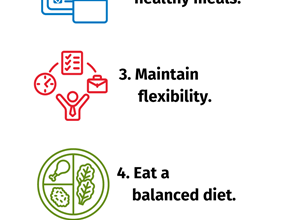How To Fix The Nursing Shortage: 7 Nurse Shortage Solutions

The “State of the World’s Nursing 2020” offers the first comprehensive look at nursing worldwide, with input from over 190 countries. Produced by the World Health Organization (WHO) with the International Council of Nurses (ICN) and Nursing Now, the report reveals a global nursing workforce of 28 million, facing a shortage of 5.9 million nurses, as cited in this Nursing Times article.
Specifically for the United States, projections from the US Bureau of Labor Statistics indicate a demand for over 275,000 additional nurses from 2020 to 2030.
The nursing shortage is a pressing issue in the healthcare industry, requiring strategic solutions to ensure the well-being of patients and the sustainability of the healthcare workforce. In this article, we’ll delve into seven comprehensive strategies aimed at figuring out how to fix the nursing shortage.
Exploring the Factors Behind the Present Nurse Staffing Shortage
The current nurse staffing crisis can be attributed to a variety of factors that have been exacerbated in recent years:
- COVID-19: The pandemic has significantly increased stress and fatigue among nurses, as they work long hours in high-pressure environments while facing personal safety concerns. Many nurses have experienced burnout and job dissatisfaction as a result, leading to a decrease in the number of healthcare professionals available to provide essential care.
- Inadequate nursing administration: This problem has contributed to the crisis by failing to properly support and retain nurses, further exacerbating the shortage.
- The aging and retiring population of nurses: As more nurses reach retirement age, like the baby boomer generation now, there are not enough new graduates entering the field to replace them. This lack of incoming talent has created a significant gap in staffing levels, making it difficult for healthcare facilities to adequately meet patient needs.
- Economic downturns: As healthcare organizations face budget cuts during these challenging times, they are often forced to make difficult decisions such as freezing hiring, reducing staff hours, and even laying off employees. These actions not only strain the existing workforce but also make it difficult for organizations to invest in strategies to recruit, train, and retain nurses.
- Technology: While advancements in technology can streamline processes and improve patient outcomes, it can also present challenges for some nurses, particularly those who may struggle with adapting to new systems. This can lead to feelings of frustration and inadequacy, causing some seasoned nurses to consider leaving the profession earlier than expected. Additionally, specialties like nursing informatics are in high demand, further exacerbating the shortage of nurses in direct patient care areas.
The Problem with Rural Communities
Rural communities across the country are facing a looming crisis as they struggle to address the nurse staffing shortage. These areas are already grappling with limited resources and infrastructure, and are now finding it increasingly difficult to attract and retain healthcare professionals.
The lack of amenities, lower pay scales, and isolation from urban centers all contribute to this challenge, making it an uphill battle for rural healthcare facilities to maintain a sufficient number of registered nurses on staff.
Why Is It So Important to Solve the Nurse Shortage in America?
It’s critical to prioritize solving this problem because of the crucial role that nurses play in patient care and population health. The shortage of nurses not only impacts patient outcomes, (we just have fewer nurses available to provide care), but it also puts a strain on those who are working, leading to increased errors and reduced quality of care.
Evidence has shown that adequate staffing levels are proportional to improvement in patient outcomes, reduced mortality rates, shortened hospital stays, and even a decrease in adverse events such as infections.
Furthermore, solving the nursing shortage has economic benefits for both healthcare institutions and taxpayers. Improved patient outcomes not only lead to cost savings for healthcare facilities, they also result in overall savings for taxpayers by reducing the need for longer hospital stays and additional treatments due to poor healthcare outcomes.
Nurse Shortage Solutions
In this segment, we will explore seven actions to alleviate the nurse shortage crisis, focusing on practical strategies that healthcare organizations can implement.
1. Competitive Compensation Packages
As nurses, we all know the strain of the current nursing shortage. Long hours, demanding workloads, and understaffing have become the norm, putting immense pressure on our ability to deliver the exceptional care our patients deserve. But there’s a crucial factor that can significantly impact this situation: competitive compensation packages.
Competitive compensation goes beyond just a good base salary. It’s about recognizing the immense value nurses bring to the healthcare system. Here’s how competitive packages can help:
- Fair Salaries: Market research is key. Hospitals need to offer salaries that align with the experience, specialty, and cost of living in their area. Nurses deserve to be fairly compensated for their expertise and the critical role they play.
- Shift Differentials and Overtime Pay: Evening, night, and weekend shifts are often understaffed. Offering higher pay rates for these times incentivizes nurses to pick them up, improving coverage and reducing fatigue for everyone. Additionally, proper overtime pay ensures nurses are fairly compensated for the extra hours they put in.
- Retention Bonuses: Nurturing loyalty is key. Retention bonuses for nurses who stay with a facility for a set period can provide financial security and show appreciation for their ongoing commitment.
- Benefits: Health insurance, retirement plans, and paid time off are essential for attracting and retaining nurses. Comprehensive benefit packages offer peace of mind and support work-life balance, a major concern for many nurses.
- Tuition Reimbursement: Many nurses carry student loan debt. Offering programs that help them pay it down demonstrates a commitment to their professional growth and reduces financial stress.
- Professional Development Opportunities: Providing opportunities for nurses to advance their skills and knowledge through conferences, workshops, and certifications shows investment in their careers. This not only benefits the nurses but also elevates the quality of care provided at the facility.
2. Strengthening Relationships with Nursing Schools
Strengthening relationships with nursing schools is essential for healthcare facilities looking to recruit and retain top nursing talent. By collaborating with local educational institutions, hospitals can offer valuable hands-on experiences to nursing students through internships, clinical rotations, and preceptorship programs.
These opportunities not only benefit the students in gaining practical skills and knowledge in the nursing profession but also allow healthcare organizations to assess potential future employees. Building strong partnerships with nursing schools can also help facilities attract a diverse pool of candidates who are dedicated to advancing their careers in the nursing field.
3. Improving Nurse Safety
Implementing comprehensive workplace violence prevention programs can help nurses feel more protected at work. These programs should include training sessions for nurses to recognize and de-escalate potentially violent situations, as well as protocols for reporting incidents and receiving support afterward.
Additionally, hospitals can invest in security measures such as panic buttons, surveillance cameras, and security personnel to ensure the safety of nurses while they provide care to patients.
Creating a culture of zero tolerance for violence and aggression toward healthcare workers can significantly improve nurses’ safety and well-being in the workplace – making this a solid solution for how to fix the nursing shortage.
4. Cultivating a Supportive Organizational Culture
The nursing shortage isn’t just about external factors; it’s also about feeling valued and supported within the organization we dedicate ourselves to. Cultivating a supportive work culture is essential to retaining nurses and creating an environment where we can thrive.
Beyond occasional pizza parties, fostering a supportive culture is essential. Implementing mentorship programs, recognizing achievements, and providing resources for stress management can all contribute to a positive work environment, reducing burnout and turnover rates.
Regular meetings, open-door policies with managers, and anonymous feedback channels encourage honest communication and allow nurses to raise concerns and offer suggestions.
Also, having clear policies against bullying and harassment, and strong enforcement mechanisms, ensures a safe and inclusive work environment for all nurses.
5. Work-Life Balance Initiatives
Work-life balance initiatives are essential to show nurses that their well-being is valued, allowing them to bring their best selves to work every day.
Here’s how work-life balance initiatives can make a difference:
- Flexible Scheduling: Offering a variety of shift options, including part-time opportunities, job sharing, and predictable schedules, allows nurses to manage personal commitments and family needs.
- Paid Time Off: Adequate paid time off, including vacation days, sick leave, and mental health days, gives nurses time to recharge and avoid feeling constantly stretched thin.
- Childcare Support: Programs that provide on-site childcare or help with childcare costs can be a game-changer for nurses with families.
- Wellness Programs: Facilities can promote healthy habits by offering stress management workshops, fitness programs, or discounts on gym memberships.
- Respecting Breaks: Ensuring nurses have time for uninterrupted breaks throughout their shifts helps them to maintain focus and energy, ultimately improving patient care.
- Telecommuting Opportunities: For certain nursing specialties, especially those that involve administrative tasks, data analysis, or patient education, telecommuting options can offer valuable flexibility. Working remotely on specific days or for certain tasks can free up time for nurses to manage personal needs or appointments, reducing stress and improving overall well-being.
6. Gender Diversity in Executive Leadership
Women make up nearly 70% of the global health workforce and 89% of this demographic comprises nurses, according to research. But only 25% of senior healthcare roles are filled by women according to research by the WHO.
Healthcare organizations must actively encourage diversity, equity, and inclusion, fostering opportunities for women to progress into leadership roles. Despite strides in nursing education and the profession’s evolution, there’s a common belief that nurses are mainly in supportive roles rather than leadership positions.
This mindset undervalues nurses’ skills and knowledge, impacting their motivation, career growth, and involvement in decision-making. Cultural norms favoring masculine leadership further disadvantage women nurses, who often receive inadequate training and orientation for leadership roles, as noted in research.
Methods for improving gender diversity in leadership positions encompass mentorship, leadership training, career guidance, networking events, sponsorship, and tailored recruitment processes.
7. Adequate staffing and resources
Adequate staffing and resources are essential for maintaining the health and well-being of healthcare workers, especially nurses. The reality of working short-staffed is a common occurrence in many healthcare settings, leading to burnout and increased stress levels among those trying to pick up the slack.
To address this issue, healthcare organizations need to prioritize adequate staffing levels and provide necessary resources for nurses to effectively carry out their duties. By implementing strategies such as adequate staffing ratios, and providing access to necessary equipment and support staff, healthcare facilities can help improve overall staff morale, reduce burnout, and enhance patient care outcomes.
How to fix the nursing shortage is a complex question, but it’s also an opportunity for collective action. By advocating for ourselves and each other, we can create positive change. We’ve explored several key strategies, but these are just some of the pieces of the puzzle.
FAQ for How To Fix The Nursing Shortage
What are some effective nurse shortage solutions?
Effective nurse shortage solutions include:
Competitive compensation packages (so important!)
Strengthening relationships with nursing schools
Improving nurse safety
Cultivating a supportive organizational culture
Implementing work-life balance initiatives
Promoting gender diversity in executive leadership
Ensuring adequate staffing and resources
How can competitive compensation packages help fix the nursing shortage?
Competitive compensation packages help fix the nursing shortage by offering fair salaries, shift differentials, retention bonuses, comprehensive benefits, tuition reimbursement, and professional development opportunities. These incentives attract and retain nurses by recognizing their value and supporting their financial and professional needs. All nurses want to feel valued and appreciated! Paying them what they are worth (or at least a lot closer to that amount), is a solid step in the direction of retaining more great nurses in our field.
What role do nursing schools play in addressing the nurse shortage?
Strengthening relationships with nursing schools plays a crucial role in addressing the nurse shortage by providing hands-on experiences to nursing students through internships, clinical rotations, and preceptorship programs. These partnerships help recruit and retain top nursing talent and ensure a steady pipeline of new nurses entering the workforce.
Why is it important to improve nurse safety to solve the nursing shortage?
It helps nurses feel protected and valued at work. Implementing workplace violence prevention programs, investing in security measures, and creating a zero-tolerance culture for violence and aggression can significantly enhance nurse well-being and job satisfaction, which in turn will likely reduce burnout and turnover rates.
How would work-life balance initiatives contribute to nurse shortage solutions?
They introduce flexible scheduling, paid time off, childcare support, wellness programs, and the respecting of breaks. These initiatives help nurses manage personal commitments, reduce stress, and maintain their well-being, making the nursing profession more sustainable and attractive.
What are your ideas?
Share in the comments below your experiences and suggestions for how we can address the nursing shortage. Have you seen successful initiatives at your workplace? Are there additional strategies we haven’t mentioned?
Let’s keep the conversation going, share our knowledge, and advocate for a healthcare environment that values and supports our profession.
More Resources
- What Do Nurses Want From an Employer?
- Recruiting Nurses in a Competetive Market: A Comprehensive Guide
- Nursing Faculty Shortage: 5 Innovative Strategies to Address The Shortage of Nurse Educators






